To Hell and Back: Inside the Tumultuous Making of 'Diablo IV'
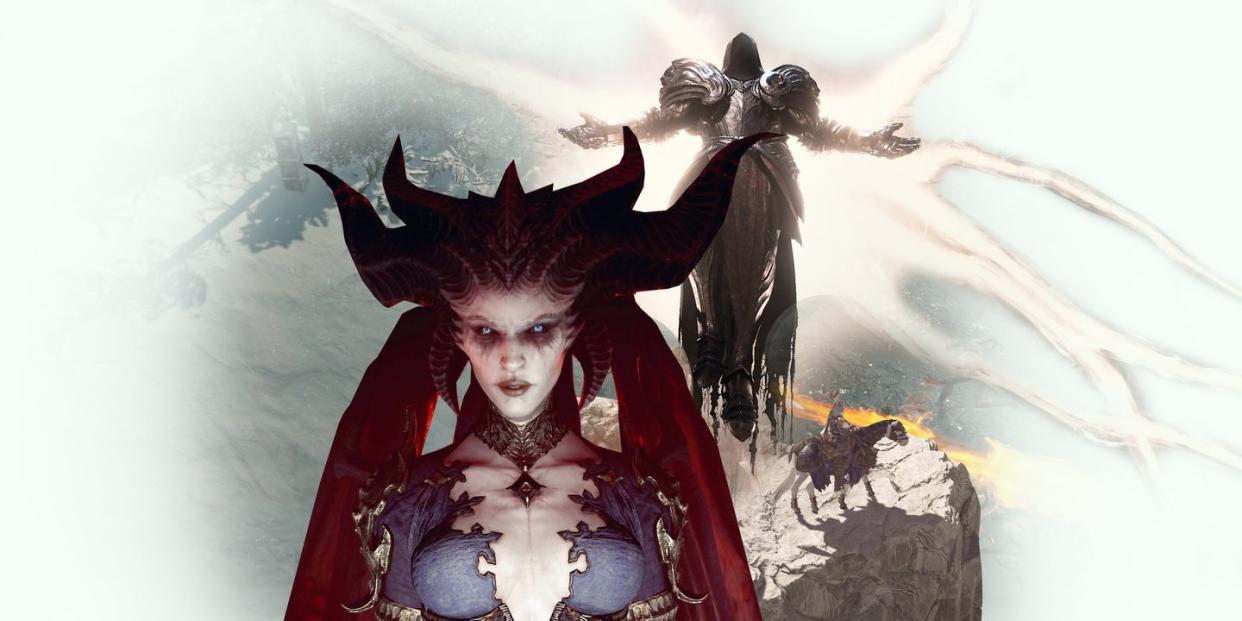
Four years ago, on the day after Halloween—the Day of the Dead—thousands of people huddled in the dark, waiting for their first glimpse at Diablo IV in the Anaheim Convention Center.
The stakes were extremely high. If you were a certain kind of geek in the late '90s, the original Diablo was a pop culture phenomenon. Set in a dark fantasy world filled with angels and demons, it was also the grandfather of action role-playing games like Elden Ring and Assassin’s Creed.
But that November in 2019, more than seven years had passed since the release of Diablo III. It had sold more than 20 million copies to become the fourth-best selling PC game of all time—more than Doom, Myst, Dark Souls, and the first two Diablo games combined, and about the same number of copies Elden Ring would ship across all platforms in its first year.
Offstage in Anaheim, the game’s art director, John Mueller, watched as the stunning, Hollywood-quality“reveal cinematic” for Diablo IV began playing for the crowd. But a few seconds later, unexpectedly, the room went dark again.
“You could hear the audio but the screen was gone,” Mueller says. “Literally, I was dying. I thought, ‘This is a heart attack.’ And what happened next was worse: it just turned into Windows screens going into Windows screens.”
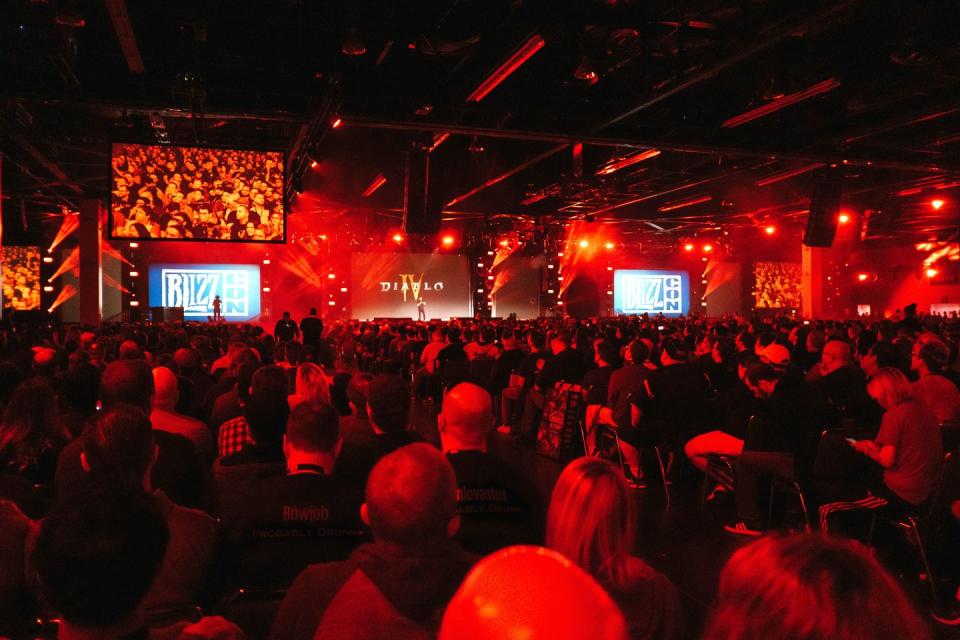
Mueller says his heart recovered when he learned it was only the viewers in Hall D who experienced a blackout, and that the screen recovered in less than 30 seconds. “I was in a different hall, so we had no idea it had happened,” says another member of the Diablo IV team. “Everyone around me was crying. I was also crying.”
Despite the glitch, Diablo IV’s debut was a massive success. Even fans who were disappointed with Diablo III’s brighter, colorful aesthetics were excited to explore a darker, more Gothic world—and to encounter the franchise’s most fascinating character yet, the demonic queen Lilith.
Mueller tells me this story in a conference room at Blizzard’s headquarters in Irvine, California—about halfway between Disneyland and Laguna Beach—where I’ve come to meet some of the people who made Diablo IV. Just beyond the door, all the lights are off, because according to a developer on the team, “artists hate light.”
Soon, millions of people around the world would discover what I did during my nine hours at Blizzard: Diablo IV is a gorgeous, cinematic adventure that will rival The Legend of Zelda: Tears of the Kingdom and (potentially) Starfield for 2023’s game of the year.
At the same time, Blizzard’s corporate turmoil during the development of Diablo IV made it the most dramatic story in the entertainment industry—a real-life mashup between the dysfunction of Apple TV’s Mythic Quest and the intrigue of HBO’s Succession. After allegations of harassment and discrimination toward women in high-profile lawsuits, a massive employee walkout, and staff attrition, Blizzard fired Diablo IV’s original leaders less than two years ago.
“Working on Diablo IV was one of the most traumatizing game experiences of my life,” a former Blizzard employee tells me, speaking of the early years under the game's first director and lead designer. Compare that quote to this one from Naz Hartoonian, a producer who joined the team in August 2021: “I’ve been treated with nothing but the utmost respect, and everybody has been an absolute joy to work with.”
By all accounts, conditions on the Diablo IV team have improved since 2021, thanks to employee-led efforts across Activision Blizzard, as well as new leaders like game director Joe Shely. But to understand how Diablo IV went from a crisis to a comeback story—and why some staff are still pushing for changes at the corporate level that will have a far-reaching impact on the video game industry at large—I spoke with more than two dozen current and former Blizzard employees, some of whom shared new details about the making of Diablo IV under the condition of anonymity.
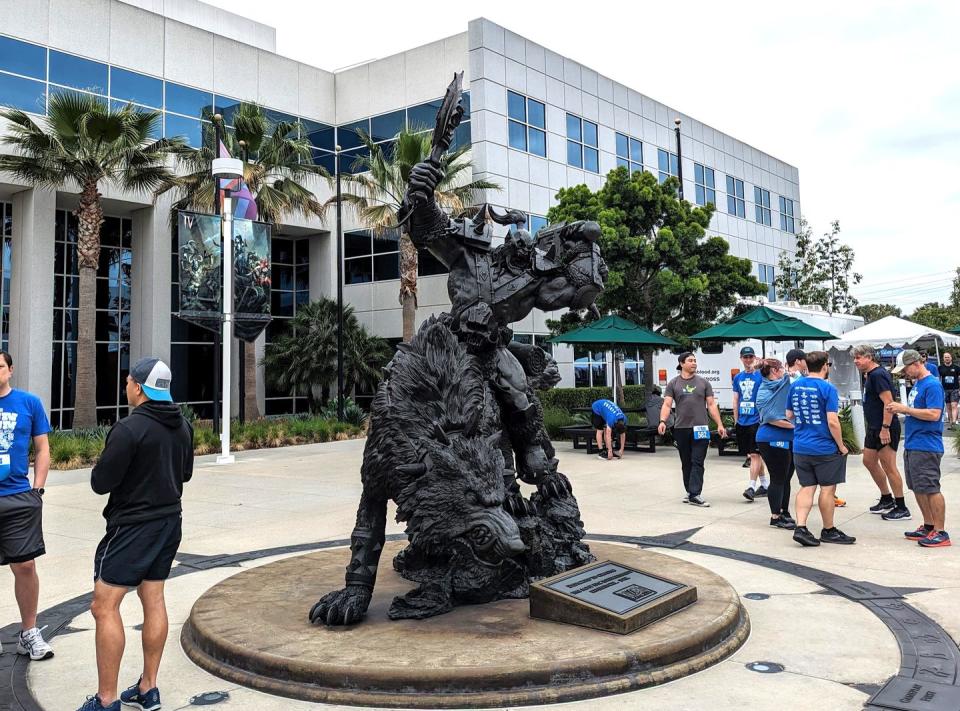
Behind the scenes, Diablo IV’s origins were allegedly a source of tension and attrition at Blizzard. It began with another massively successful franchise, World of Warcraft, which has grossed more than $9 billion in revenue since its release in 2004. According to multiple former employees, when Blizzard’s World of Warcraft team began addressing its own culture issues (that wouldn’t become public knowledge until a 2021 lawsuit) in the latter half of the 2010s, “some of the men who were problems at World of Warcraft went over to the Diablo team, and were problems there.”
Two Warcraft alums, Luis Barriga and Jesse McCree, became Diablo IV’s original game director and lead designer. In January 2019, after their disorganized leadership had stalled progress on the game’s early development, Barriga poached a new creative director from the Polish game studio CD Projekt Red: Sebastian Stępień, head writer of Cyberpunk 2077 and one of the lead creatives on The Witcher 3, two of the best-selling video games of the century so far across all platforms.
Over the next eight months, Barriga, McCree, and Stępień rewrote the core story of Diablo IV in a conference room with five other men. This time, the main villain would not be Diablo himself, the unintentionally campy Lord of Terror who looks a lot like Tim Curry in Legend. Instead, the rogue demon who co-created humankind in Diablo's mythology—Lilith—would return to claim the earth-like realm of Sanctuary between the High Heavens and the Burning Hells. “She’s not a big evil monster that’s going to come and crush you like Diablo. She’s more manipulative,” says Melissa Corning, a lead producer on the story and narrative team.
The team’s original idea for Lilith leaned into her role as a mother, but according to multiple former employees, the revised storyline sexualized the character and used an old, non-canonical reference to Lilith as “Queen of the Succubi” as justification.
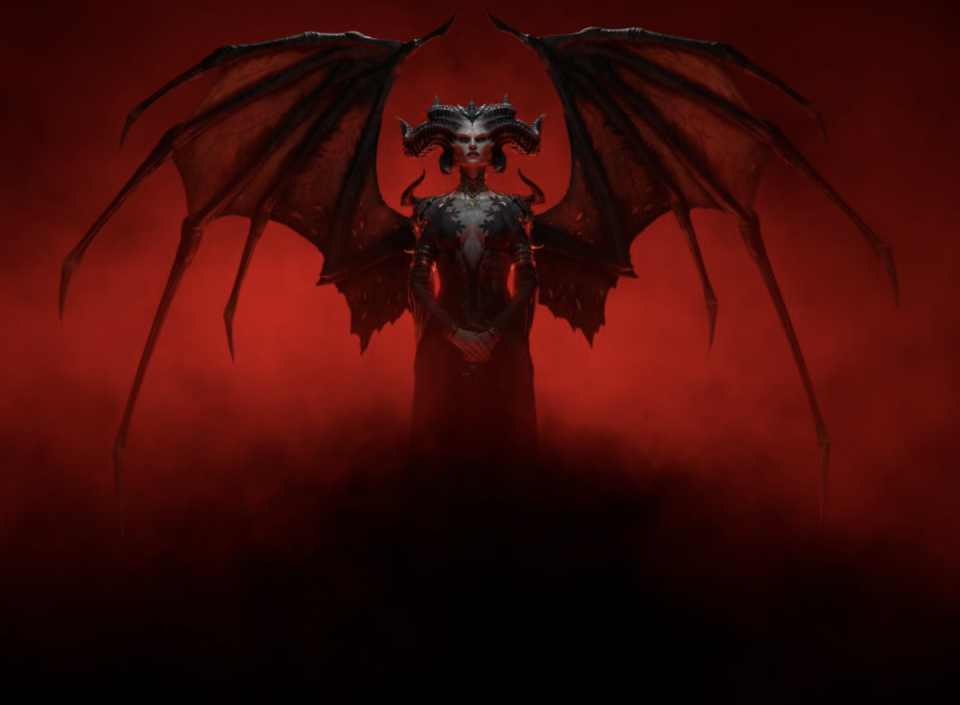
Soon, a schism formed between Stępień and Barriga. “They were fighting all the time and we could hear it,” says a former employee. “They were asked to keep [their issues with each other] buttoned up because it was affecting the team.” But the office tension increased when early scripts included elements former employees say were ableist and misogynistic.
For instance, the rogue angel Inarius was originally in a wheelchair, until a scene where a former employee says “he realized he didn’t need it anymore” because it was “just a symbol of his brokenness.” In another scene, the human character Donan—at that point an elderly, disfigured white man—was seduced by Lilith, who pressed her body against his, put her leg between his, and "took a bead of sweat from his forehead and wiped it sensually across his lips," an image multiple women on the team found "disgusting." After feedback, both of these scenes were changed for the final version of the game.
But the most upsetting part of these early script ideas, as Shannon Liao reported in the Washington Post last year, was a female character labeled "the raped woman." Another former employee tells me the eight-man story room in 2019 did not push back against the "rape version" of the script until a female producer, who was in the room keeping notes, voiced her concerns. In Liao’s report, a company spokesperson said that the rape version was “character backstory, not game content,” and that all references to rape were removed before the game launched.
“Wars were fought to get underwear on one of the women in the game,” another former employee tells me. “For the longest time, Taissa was the only woman-of-color character, and it was very important to [Stępień] that she only wore a single piece of white cloth — no bra, no underwear.” A female team member fought an “exhausting battle” to cover up more of Taissa’s body, and only “at the 11th hour" was the character’s wardrobe finally changed.
Because of these concerns and others, "women on the team were begging for sensitivity readers" to review the scripts, a former employee says. But at the time, male leaders said they needed to wait until the story was finished.
Stępień was not among the Diablo IV staff Blizzard made available during my visit in May 2023. I walked by his office, but it was empty.
Former employees say issues with the scripts, combined with Barriga and McCree's indecisive leadership, led to Diablo IV's first wave of staff attrition. Meanwhile, despite this turbulence, some members of the team were making good creative decisions that would shape the game into something spectacular.
"One of the hard questions I had to answer was, ‘What should the next generation of Diablo look like?’" John Mueller says. We're in his office now, on the second floor of the Diablo building and blessed with some natural light. Diablo III had been criticized by some fans as a cartoonish departure from the franchise’s roots, so for Diablo IV, Mueller “wanted to go in a different direction with a darker tone."
Mueller points to a painting above his desk, a baroque depiction of human beings caught between angels and demons. "That's Igor Sid. He works for us now." Mueller discovered Sid's online portfolio early in the development process, and thought it was a perfect match for his “Old Masters” design pillar for Diablo IV.
"We wanted to make a game that felt like a medieval painting," Mueller says, though he also shared reference images with his team from later artists, like “Rembrandt and Ilya Repin and [Théodore Géricault’s The Raft of the Medusa]." For the different environments players would explore in the world of Sanctuary, Mueller was inspired by 19th-century landscape painters associated with the Hudson River School, like Albert Bierstadt. “Somebody told me once that good landscapes aren’t pretty. If you look at them through the right lens and play the right music… they're terrifying.”
But before things could get better for the entire Diablo IV team, they had to get worse.
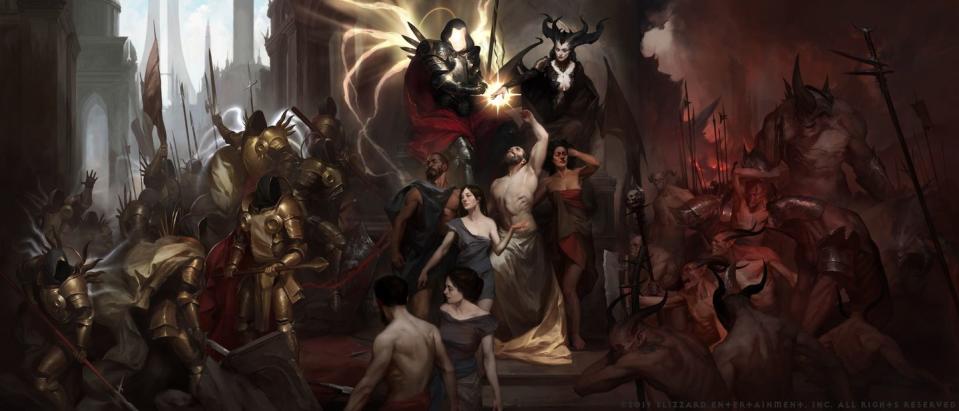
Around 4 p.m. on Wednesday, July 21, 2021, a news story spread like hellfire on Blizzard’s employee Slack channels: After a two-year investigation, the California Department of Fair Employment and Housing had filed a lawsuit against Activision Blizzard for allegedly violating “the state’s civil rights and fair pay laws” and fostering “a breeding ground for harassment and discrimination against women.”
The allegations were grotesque. According to the California agency’s complaint:
Female employees are subjected to constant sexual harassment, including having to continually fend off unwanted sexual comments and advances by their male co-workers and supervisors and being groped at the ‘cube crawls’ and other company events. High-ranking executives and creators engaged in blatant sexual harassment without repercussions. In a particularly tragic example, a female employee committed suicide during a business trip with a male supervisor who had brought butt plugs and lubricant with him on the trip.
“When the story dropped, [our Slack channels] blew up,” a former Blizzard employee tells me. “It made me sick,” another says. “For the women, it was pure elation that people would finally believe us, combined with horror about what the repercussions would be for us.”
Over the next few days, employees were invited to emergency all-hands meetings with their individual teams. An all-hands for the entire company with corporate leaders at the Activision Blizzard level was also planned, but later canceled.
“A lot of the men on the calls were like, ‘We knew these guys were assholes, but we didn’t know they were abusive," a former employee says. "And the women were like, ‘Did you not think that those two things were related? And how did every single woman know about the abuse?’”
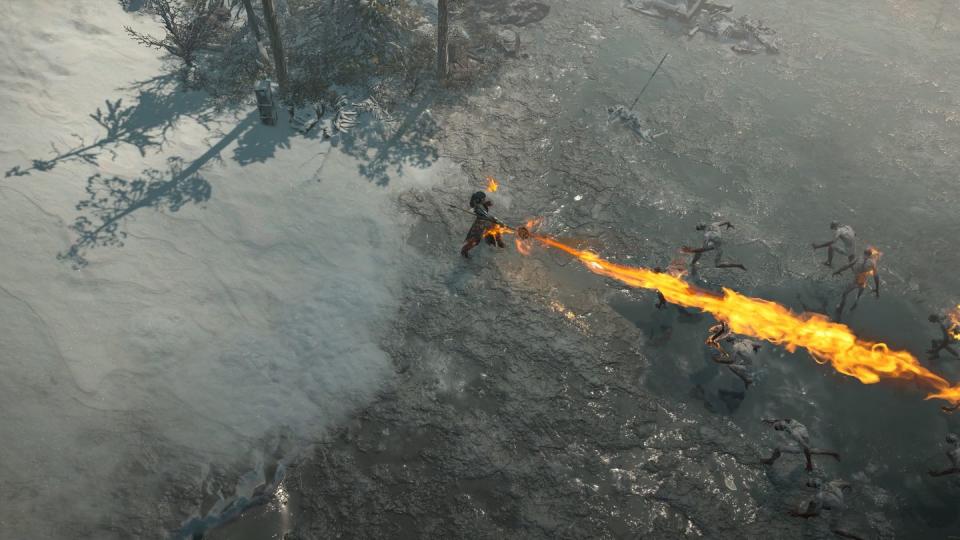
Since some of the worst allegations in the lawsuit had been levied at former World of Warcraft creative director Alex Arasiabi, former employees say some men in the Diablo IV all-hands questioned the need for a meeting. “Why are we even talking about this? This is a World of Warcraft problem,” one employee reportedly asked.
Later that week, Activision Blizzard executive vice president Frances Townsend sent an email to all employees calling the DFEH allegations a “meritless and irresponsible lawsuit” that “presented a distorted and untrue picture of our company, including factually incorrect, old, and out-of-context stories.” The email denied the allegations in the California agency’s complaint. It said that Blizzard takes “a hard line approach” to “inappropriate or hostile work environments and sexual harassment issues,” and that it has been committed to diversity and fair compensation. Though it was sent and signed by Townsend, the email was reportedly authorized by Activision Blizzard CEO, Bobby Kotick, according to a company representative quoted in The Wall Street Journal.
In response, more than 2,000 of the company’s employees signed a letter to Activision Blizzard’s leaders calling the email “abhorrent and insulting,” and that “our values as employees are not accurately reflected in the words and actions of our leadership.” Kotick later called the Townsend email “tone deaf.” And on July 28, hundreds of employees protested with an in-person and virtual walkout organized by Jessica Gonzalez, a senior test analyst who would leave the company a few months later with sharp words for Kotick.
A week later, J. Allen Brack, the president of Blizzard mentioned by name in the lawsuit for only giving Afrasiabi “a slap on the wrist,” resigned from the company. He was immediately replaced by Mike Ybarra and Jen Oneal, though Oneal would soon resign, allegedly over pay disparity, as well as being “tokenized, marginalized, and discriminated against,” according to allegations Oneal made in internal emails obtained by the Wall Street Journal.
Finally, on August 11, 2021, Blizzard fired Barriga and McCree, Diablo IV’s director and lead designer, leaving Stępień as the only remaining creative lead. No reasons were given for their departures. I tried to get in touch with Barriga and McCree, but their digital footprints have been completely wiped. I also reached out to Oneal and Brack, who’ve since co-founded a new studio together called Magic Soup Games, but they declined to comment.
Blizzard continues to deny the allegations made in the DFEH lawsuit, which is still pending in court. Last year, Blizzard filed its own lawsuit against the DFEH, alleging ethical lapses in the agency’s investigation, and arguing that the DFEH was interfering with another lawsuit against Blizzard brought by the Equal Employment Opportunity Commission.
The departures of Barriga and McCree left a leadership vacuum on the Diablo IV team, and another wave of staff attrition followed in the wake of the Townsend email. But on October 7, 2021, Blizzard announced a new game director whose management and vision—including knowing when to get out of his team’s way—would help shepherd Diablo IV across the finish line in less than two years.

giving it to someone else, so you can say ‘I made that,” and they can say, ‘Cool, I hate it,’” says Joe Shely, who was instrumental in bringing Diablo IV to the finish line.' expand='' crop='original'][/image]
When Joe Shely walks into the conference room in Irvine, he’s wearing a blood-red bomber jacket emblazoned with the Diablo IV logo. He doesn’t look as exhausted as I expected three weeks before launching the biggest game of his career, but he does seem tired.
Shely grew up on the coast of Oregon, in a small town somewhere between Coos Bay and Crescent City. “I had a computer science teacher in high school who was like a secondary father figure to me,” he tells me. Under his teacher’s mentorship, Shely learned how to code by modding maps for Doom and Duke Nukem. In high school and college, he played a lot of Blizzard games, such as StarCraft, Warcraft II, and Diablo II. After attending an aeronautical school in Arizona and working as an intern at the aerospace conglomerate Honeywell, he realized he only loved “the idea” of space and planes, not the process of building vehicles he would never operate.
“For me, a big part of the creative endeavor is [making something and] giving it to someone else, so you can say ‘I made that,” and they can say, ‘Cool, I hate it,’” Shely says.
But since he was playing Diablo II all night at the time, he researched every video game company in existence and sent out hundreds of resumes and CVs. “Blizzard was one of the companies I really wanted to work for, but they said no because I didn’t have any game experience,” he remembers. But after working somewhere else, he eventually got hired at Blizzard in 2005, and worked as a designer on World of Warcraft before building monsters and dungeons on Diablo III. Eventually, he was promoted to one of the lead creatives on Diablo III’s extremely well-received expansion, Reaper of Souls.
When Luis Barriga was fired in 2021 and Shely was asked to take his place as game director, Shely says it felt like a huge responsibility. “A lot of incredibly talented and creative people are working together to make a single thing, [and] I need to make sure I don’t let all these people down.”
Even the former employees with negative experiences under Barriga speak very highly of Shely. “He’s a very talented designer, and at heart, he’s a good man,” one of them tells me, though they’re also cautious about contributing to a “white man savior” narrative when so much of the progress made at Blizzard is a direct result of underrepresented people in the gaming industry.
“When Joe stepped into that role, he did not bring an ego with him,” says Rod Fergusson, the executive producer and head of the entire Diablo franchise. “He didn’t start to unravel things [just to make them his], but he did come in with a strength of vision and a confidence that allowed [the team] to continue moving forward, even when [he] wasn’t necessarily aligned with previous visions.”
Fergusson is relatively new to Blizzard, having joined the team in 2020 right before the pandemic hit. Born in Ottawa, one of Fergusson’s fondest memories is playing Diablo II with his brother in Winnipeg for four days straight in the summer of 2001. He eventually moved to Seattle and “shipped about 22 games in 22 years” for Microsoft. When Blizzard first reached out to Fergusson about overseeing “all things Diablo,” he said no, but after he finished work on Gears of War 5, they came back and asked again.
“Some of my friends were like, ‘Why would you go to Blizzard right now? It seems like they’re having some problems over there.’ And I said, ‘That’s kind of my MO.’ I like to go places where I have an opportunity to change and help.”
I ask Shely and Fergusson how things have changed for the better on the Diablo IV team under their leadership. They both point to a quarterly survey Fergusson provides to employees, where anyone can give anonymous feedback. “We get all the responses and come up with ways to address concerns,” Shely says.
Former employees tell me the earliest versions of these surveys in 2020 featured “atrocious” satisfaction scores, and that the slide decks presenting their findings included bullet points like “feedback is often not heard,” “concern about cliques forming,” “poor listening, transparency, and communication,” and “slow decision-making, unclear approval process.” But this feedback was collected during the final year of Barriga and McCree’s leadership, not under Shely. According to Fergusson, Shely, and several employees I spoke with, survey responses have significantly improved since then.
“Before, people didn’t understand what was going on, or why certain decisions were being made,” Fergusson says. “But as long as I can trust that my team won’t instantly tweet when I’m talking to them, I’ll pretty much tell them as much as I can.”
As further evidence of improvement, an Activision Blizzard spokesperson sent me its latest ESG report, according to which “all business units saw an increase in the combined representation of women and non-binary employees”—specifically, from 24% in 2021 to 26% in 2022. For a company with 13,000 employees, that translates to around 260 people. Activision Blizzard also appointed its first Chief Diversity, Equity, and Inclusion Officer last year, as well as a Head of Inclusive Game Design, and settled with the EEOC in a federal case against Blizzard alleging sexual harassment and sex discrimination claims. The company did not admit to any wrongdoing in that settlement, but agreed to pay $18 million to claimants, and to establish complaint procedures and training to ensure that any such issues are handled better in the future.
“I’ve seen that diversification on my team,” says Matt Burns, a principal writer who a former employee says was “a good ally” during the turbulent years. “We try to embrace the ‘every voice matters’ tenet and live it day-to-day.”
Naz Hartoonian agrees: “Our team right now is full of diverse individuals with different perspectives.” When I ask about her best day working on Diablo IV, she says, “It’s not one day, it’s every day for me.”
In Irvine, associate game director Zaven Haroutunian sits down at John Mueller’s desk and pulls up the custom game engine they used to build Diablo IV. He points to a God’s-eye view of the game’s world, painstakingly assembled over the last three to five years (no one will say how many, exactly) by dozens of artists, designers, and developers into a massive grid of three-dimensional tiles, each filled with topography, architecture, and monsters.
“This is real, I shit you not!” Haroutunian says. He turns to look at me, Mueller, and the PR staff who escort me around campus all day. “There are exactly 666 tiles,” he claims, to the disbelief of his own colleagues. Everyone laughs. "I don't even remember why I was counting them, but I couldn’t believe it."
"This is what happens when you do a game with pentagrams," Mueller says.
Later, Haroutunian pulls up a 3D model of a giant spider ingesting a human corpse. "So what happens is, you see a corpse on the ground, and it looks like there's a spider eating it," Mueller says. "And then when you get up close, the spider actually lifts the corpse up and begins to puppet it at you. And then when you kill the human part of it, it explodes into a bunch of baby spiders, and the big spider jumps off, so now you're fighting the big spider and all of its babies."
For Kayleigh Calder, a lead game producer who's been at Blizzard since 2008, exploding spiders and something called the Temple of Rot are what make Diablo IV so much fun to create. "It's disgusting and I love it," she says. "I can't wait for people to see it. And be disgusted."
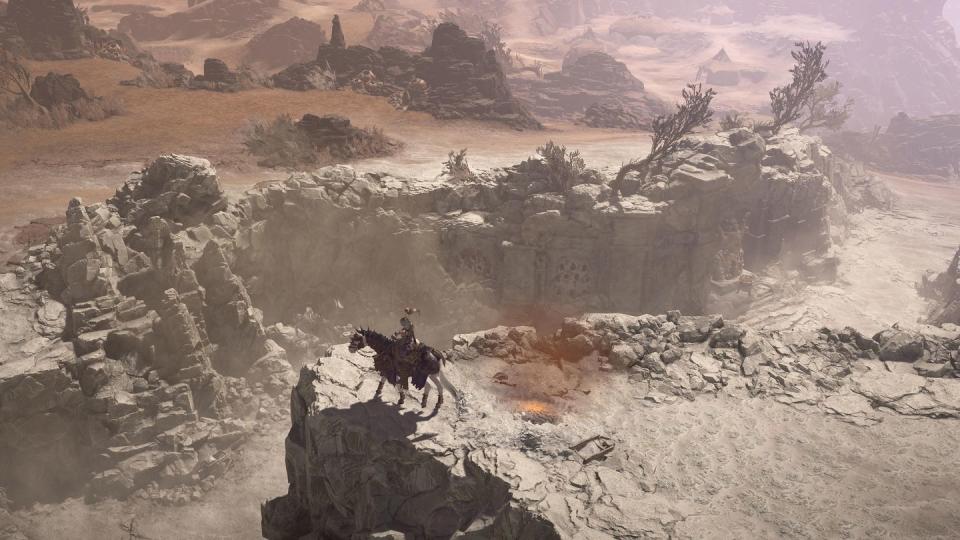
Calder’s quote would have been a decent kicker, but over the past three weeks, a few things happened after I left Irvine.
First, critics published their initial reviews of Diablo IV, and almost all of them were breathless raves. Gamers love it, too: “I've been playing Diablo for over twenty years,” says Rachel Kambury, an editor at HarperCollins. “To say that Diablo IV surpassed all of my expectations would be putting it lightly—this feels like the game I've been waiting for my whole life.”
Second, it became the fastest-selling Blizzard game of all time on both consoles and PCs, as fans played for a collective 93 million hours during the first four days of an early-access release, “the equivalent [of] playing 24 hours a day since the beginning of human civilization.” And third, Activision Blizzard CEO Bobby Kotick gave a bizarre interview to Variety that sent another round of shockwaves through the Irvine campus and its diaspora.
“[We] did not have a systemic issue with harassment—ever,” Kotick claimed in the interview, before blaming “mischaracterizations reported in the media” on “a very aggressive labor movement working hard to try and destabilize the company.” (This was despite the fact that the media reported the allegations of his own employees, and that they began to unionize after the DFEH lawsuit went public, not before).
“Everyone is livid,” a former Blizzard employee told me the day after Kotick’s interview was published. Both current and former members of the Diablo IV team were furious and depressed that Kotick would undermine the progress Blizzard has made mere days before the launch of the game. “Unfortunately, it’s not uncommon for [Activision Blizzard] leadership to do things like this,” said another former employee, Kate Anderson, who left the company earlier this year after it announced a mandatory return-to-office policy and gave me permission to use their name. “It’s very frustrating for employees and undermines the hard work [they] put into their games.”
I sent an Activision Blizzard spokesperson four questions for Bobby Kotick, but received responses from other spokespeople instead of Kotick himself. One of my questions was about Blizzard’s return-to-office policy that goes into effect on July 10, and which some employees say is leading to further attrition.
“Despite recent misinformation, our retention is up across all business units, our games remain on schedule, and our teams remain committed to exceeding player expectations,” the spokesperson said. “The three business units—Blizzard, King, and Activision—customized their own plans based on what’s best for the business and their teams; most teams have decided to return three days a week, including Blizzard.”
And while employees say conditions on individual teams have improved since 2021, some say relations with Activision Blizzard’s corporate leadership has actually gotten worse. “Once we started unionizing, the company got very hostile,” a former employee told me.
Back in Irvine, I didn’t ask the current Diablo IV team about Kotick specifically, but I did ask them if things have changed for the better. They all said yes, and they all spent more time lifting up their colleagues than talking about themselves.
“I’ll tell stories about this game for the rest of my life,” John Mueller said near the end of my visit. After a quiet moment, he pivoted in his chair and looked me in the eye.“Great stories,” he clarified. “Really, honestly, wonderful stories.”
Despite all of the challenges they’ve faced, all of the assholes they had to put up with, and the uncertain future of Activision Blizzard, there are a lot of kind and brilliant people who made Diablo IV an extraordinary game, who made the company a better place, and who will make the future of the gaming industry brighter—whether they’re still working in Irvine or have since moved on. The story of Blizzard and the Diablo franchise is still being written, but when the book is closed, I think there will be more light than darkness.
You Might Also Like


